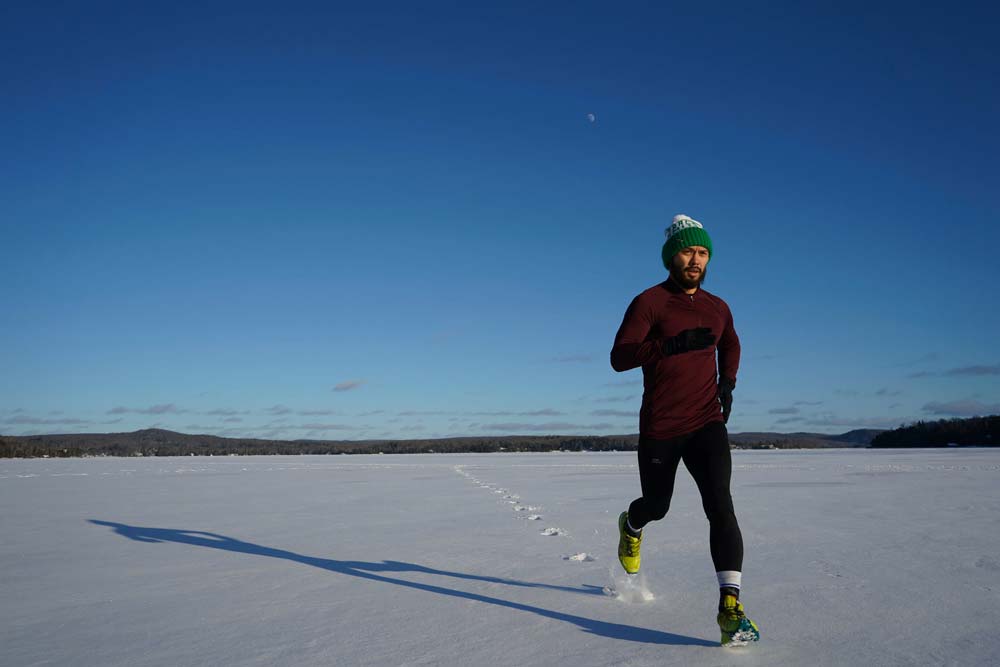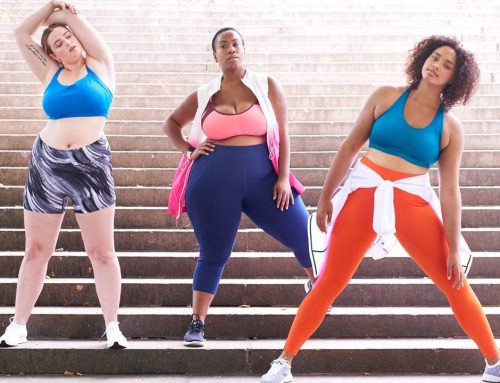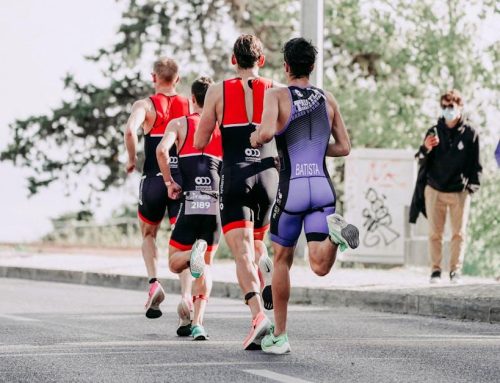Nothing will test the commitment of a runner than going for a run wearing the wrong gear in the wrong weather. While finding the right outfits (to keep you running all year round) can sound challenging and expensive, rest assured that it doesn’t need to be.
Whether you are just starting or have already established a running routine, the information below outlines the most useful running apparel. It will also introduce tips on how to adapt for all seasons so that rain or shine you’re ready to run.
Contents
What to Wear Running: The Basics
Believe it or not, the clothing you choose to run in doesn’t have to be fancy or cost a fortune. It’s much more important to look for practicality and comfort over fashion as these items will last far longer than the latest “trend.”
For practicality purposes, look for items with pockets so you can run hands-free. You’ll also want to target clothes made of synthetic materials as opposed to something like cotton. Polyester and acrylic, for example, are lightweight and will work for you all year round. They’ll help keep you dry and warm in the winter (by trapping heat) and cool in the summer by wicking sweat away.
A staple set of running gear to consider for your arsenal is as follows:
- A good pair of running shoes with a reliable grip
- A choice of leggings and/or shorts in different lengths and thicknesses (ideally compression leggings because they aid recovery and are more supportive)
- A choice of tops with and without sleeves also in varying thicknesses
- Sports bras for women
- Water and windproof jacket
- Insulated puffer jacket or gilet
Some additional accessories to consider include a pair of gloves, a running beanie or headband, cap or visor, and socks in varying lengths. Once you have the basics, all you need to do is adapt your layering and swap out certain items depending on what is going on with the weather.
What to Wear Running in the Rain
Rain is probably the weather that disrupts the most running routines, but if you are dressed appropriately, running in the rain isn’t as unpleasant as you’d imagine. The most essential item is a water and windproof jacket to keep you dry. Preferably you’ll find one with a hood, which will help stop your face and head from getting wet (and ultimately prevent your vision from being obscured).
For women, full-length leggings are also appropriate. Depending on whether it is rain in the summer or winter, this will indicate the thickness of clothes and how many layers you need underneath your jacket. As always, the grip on your trainers is critical, especially to avoid slipping when it is wet underfoot.
Following your run in the rain, make sure you change out of your wet clothes immediately and into something dry to prevent illness. Your trainers will need to dry out too. While it is tempting to heat dry them under a radiator, for example, this may alter their shape. The safer option is to let them air dry.
What to Wear Running in Cold Weather
Running in the cold can be exhilarating, but when the temperature drops, it is often tempting to layer up (easily forgetting how warm your body will become after you start moving). A good rule of thumb is to dress for weather 15-20 degrees hotter than it actually is, so you won’t feel too hot and uncomfortable once you get going.
Similar to the above, the same theory can be applied to socks. While thick socks may sound like a good idea for frosty morning runs, they assuredly are not. When you run, your feet swell. Wearing a thicker sock will only make you more prone to blisters and bruised nails. Rather than thick socks, a longer pair is a better solution for those particularly chilly days.
To find the right temp, do opt for a thicker pair of full-length compression leggings and one or two layers under a gilet or puffer jacket (as this should suffice while running in cold weather). Gilets are especially useful because they keep your core warm but aren’t restrictive on your arms. If it is slippery out from snow or ice, ensure the grip on your trainers is sound to avoid injury.
Though your body will be warm, your extremities might suffer if you forget to take the proper precautions. To avoid feeling pain due to the cold, wear gloves and something over your ears like a hat or headband.
What to Wear Running in Hot Weather
While warmer weather may seem like the easiest to dress for, comparable rules should be applied to the summer months. For your run to be enjoyable, you’ll want to dress for 15-20 degrees hotter than it is. Otherwise, after exerting yourself and running up your body temperature, you are in danger of overheating (which can cause fatigue and significantly impact the effectiveness of your training).
The length of your run in hot weather should also impact your outfit decision. When applicable, always go for thinner materials. On shorter runs, one layer of a singlet or sports bra and shorts should be adequate. If you are running further, a t-shirt, longer shorts or 3/4 length leggings should be considered as they offer more protection from the sun.
Wearing sunglasses or a cap may also be necessary to keep the sun off your face. Regardless of the length of time you are out in warmer temperatures, don’t forget to liberally apply sunscreen and take a bottle of water with you to avoid dehydration.
Stay Comfortable
Dressing appropriately and flexibly for your run (all year round) will prevent illness and injury in the long term. As always (regardless of the weather), comfort while running is imperative. If you aren’t comfortable, progress won’t be made, and you will struggle to start or keep running habitually. Use the aforementioned advice and tailor it for your personal comfort. If you are prone to feeling cold, wear additional layers. If you don’t like wearing shorts, stick to leggings and just change the thickness of them with the temperature. Do what feels best for you!
Now that you know what to wear running all year round, nothing can stop you :)








Leave A Comment